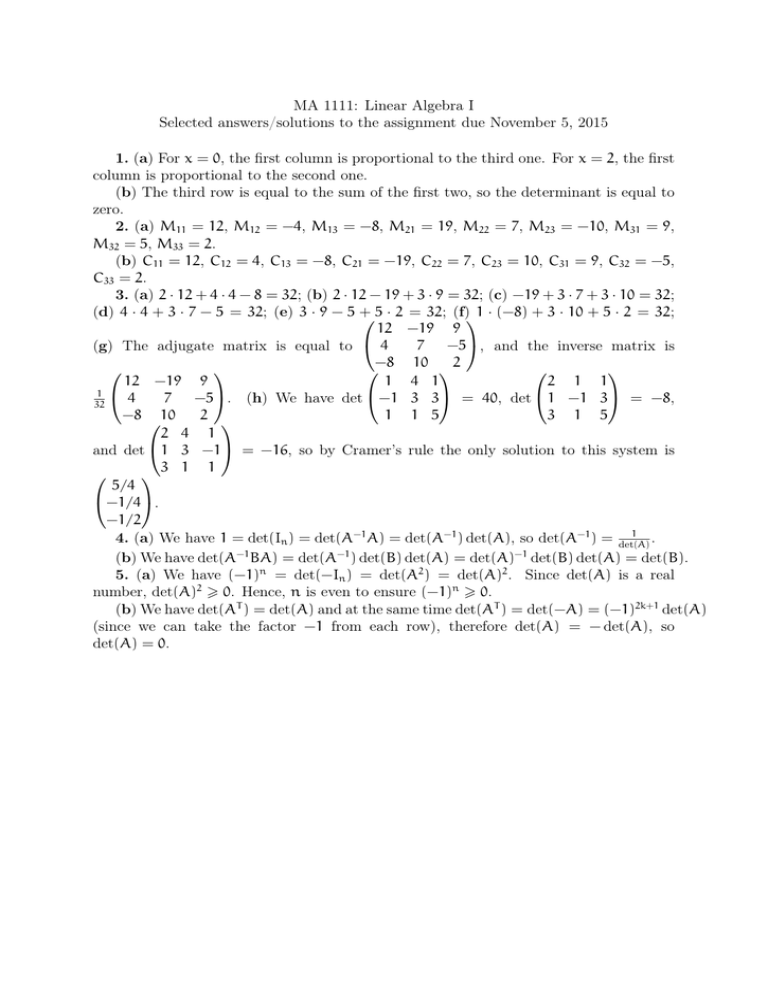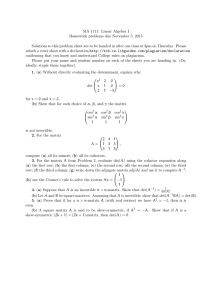MA 1111: Linear Algebra I
advertisement

MA 1111: Linear Algebra I Selected answers/solutions to the assignment due November 5, 2015 1. (a) For x = 0, the first column is proportional to the third one. For x = 2, the first column is proportional to the second one. (b) The third row is equal to the sum of the first two, so the determinant is equal to zero. 2. (a) M11 = 12, M12 = −4, M13 = −8, M21 = 19, M22 = 7, M23 = −10, M31 = 9, M32 = 5, M33 = 2. (b) C11 = 12, C12 = 4, C13 = −8, C21 = −19, C22 = 7, C23 = 10, C31 = 9, C32 = −5, C33 = 2. 3. (a) 2 · 12 + 4 · 4 − 8 = 32; (b) 2 · 12 − 19 + 3 · 9 = 32; (c) −19 + 3 · 7 + 3 · 10 = 32; (d) 4 · 4 + 3 · 7 − 5 = 32; (e) 3 · 9 − 5 + 5 · 2 = 32; (f)1 · (−8) + 3 · 10 + 5 · 2 = 32; 12 −19 9 4 7 −5, and the inverse matrix is (g) The adjugate matrix is equal to −8 10 2 12 −19 9 1 4 1 2 1 1 1 4 7 −5. (h) We have det −1 3 3 = 40, det 1 −1 3 = −8, 32 −8 10 2 1 1 5 3 1 5 2 4 1 and det 1 3 −1 = −16, so by Cramer’s rule the only solution to this system is 3 1 1 5/4 −1/4. −1/2 1 . 4. (a) We have 1 = det(In ) = det(A−1 A) = det(A−1 ) det(A), so det(A−1 ) = det(A) (b) We have det(A−1 BA) = det(A−1 ) det(B) det(A) = det(A)−1 det(B) det(A) = det(B). 5. (a) We have (−1)n = det(−In ) = det(A2 ) = det(A)2 . Since det(A) is a real number, det(A)2 > 0. Hence, n is even to ensure (−1)n > 0. (b) We have det(AT ) = det(A) and at the same time det(AT ) = det(−A) = (−1)2k+1 det(A) (since we can take the factor −1 from each row), therefore det(A) = − det(A), so det(A) = 0.





